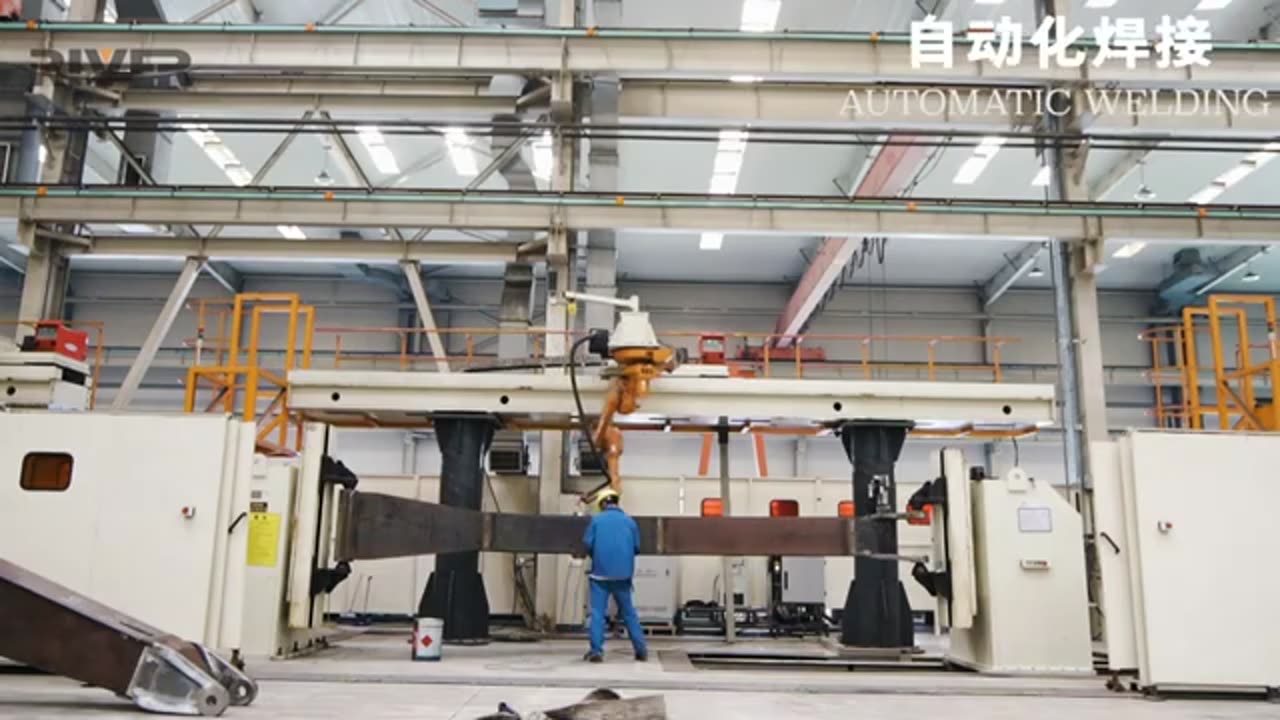Premium Only Content

Step-by-step Process of Production of Long Reach Boom
Producing a long reach boom involves several steps, which can vary depending on the specific type of boom, the materials used, and the manufacturing processes employed. Here's a general step-by-step process:
Design Phase:
Engineering and design teams create detailed plans and specifications for the long reach boom. This involves determining the required length, strength, weight, and other factors based on the intended application.
CAD (Computer-Aided Design) software is typically used to create precise drawings of the boom structure.
Material Selection:
Selecting the appropriate materials is crucial for ensuring the strength, durability, and performance of the boom.
Common materials used for long reach booms include high-strength steel alloys or composite materials.
Cutting and Shaping:
The design specifications are followed when cutting and shaping raw materials.
This step may involve cutting steel plates, beams, or tubes to the required dimensions using cutting tools such as lasers, plasma cutters, or saws.
Forming and Welding:
The cut pieces are then formed into the desired shapes using bending machines, presses, or other forming processes.
Welding is a critical step where the individual components are joined together to create the main structure of the boom. Skilled welders use various welding techniques such as arc welding, MIG welding, or TIG welding to ensure strong and precise welds.
Machining and Finishing:
Machining processes such as drilling, milling, and grinding may be performed to refine the shape and dimensions of the components and to create attachment points for hydraulic cylinders, pins, and other components.
Surface treatment methods such as painting, coating, or galvanizing are applied to protect the boom from corrosion and environmental damage.
Assembly:
Once all the individual components are ready, they are assembled according to the design specifications.
Hydraulic cylinders, hoses, connectors, and other components are installed to enable the extension and retraction of the boom.
Quality Control:
Quality control inspections are conducted throughout the manufacturing process to ensure that the boom meets the required standards for strength, dimensional accuracy, and performance.
Non-destructive testing methods such as ultrasound or X-ray inspection may be used to detect any defects or imperfections in the welds or materials.
Testing and Certification:
The finished long reach boom undergoes rigorous testing to verify its structural integrity, load-bearing capacity, and functionality.
Once the boom passes all tests and inspections, it may be certified by relevant regulatory bodies or industry standards organizations to ensure compliance with safety and performance standards.
Packaging and Shipping:
The completed long reach booms are packaged securely to protect them during transit and are shipped to the customer or the assembly site where they will be installed onto the appropriate machinery.
Installation and Integration:
Finally, the long reach boom is installed onto the designated equipment, such as excavators or cranes, and integrated into the overall system.
Throughout each of these steps, adherence to quality standards, safety protocols, and precise manufacturing techniques is crucial to ensure the reliability and performance of the long reach boom in its intended application.
Should you have any further questions please feel free to reach out?
Company's website: https://www.riverexcavator.net/long-reach-boom/
Company's official E-mail address: sales@riverexcavator.net
Mobile/Whatsapp/Telegram/Viber contacts: +86-15926413148
-
 2:27:04
2:27:04
AirCondaTv Gaming
4 hours ago $0.58 earnedWar Thunder - Tankering Around for That 10 Bomb
32K4 -
 4:19:05
4:19:05
SpartakusLIVE
7 hours agoThe MACHINE locks in for 12-hour POWER stream
23.3K1 -
 1:58:40
1:58:40
Robert Gouveia
6 hours agoJ6 Coverup: Prosecute LIZ CHENEY; NY Judge REJECTS Immunity; Trump Breaks Gag?
103K61 -
 2:22:06
2:22:06
WeAreChange
5 hours agoPSYOP Spreads: Drones Shut Down Airport In New York!
54K39 -
 1:31:18
1:31:18
Redacted News
7 hours agoEMERGENCY! NATO AND CIA ASSASSINATE TOP RUSSIAN GENERAL, PUTIN VOWS IMMEDIATE RETALIATION | Redacted
213K344 -
 56:45
56:45
VSiNLive
6 hours ago $5.09 earnedFollow the Money with Mitch Moss & Pauly Howard | Hour 1
68.1K2 -
 52:44
52:44
Candace Show Podcast
6 hours agoMy Conversation with Only Fans Model Lilly Phillips | Candace Ep 122
73.9K264 -
 LIVE
LIVE
tacetmort3m
7 hours ago🔴 LIVE - RELIC HUNTING CONTINUES - INDIANA JONES AND THE GREAT CIRCLE - PART 5
214 watching -
 26:52
26:52
Silver Dragons
5 hours agoCoin Appraisal GONE WRONG - Can I Finally Fool the Coin Experts?
32.6K2 -
 UPCOMING
UPCOMING
Bare Knuckle Fighting Championship
11 hours agoBKFC on DAZN HOLLYWOOD WARREN vs RICHMAN WEIGH IN
19.3K